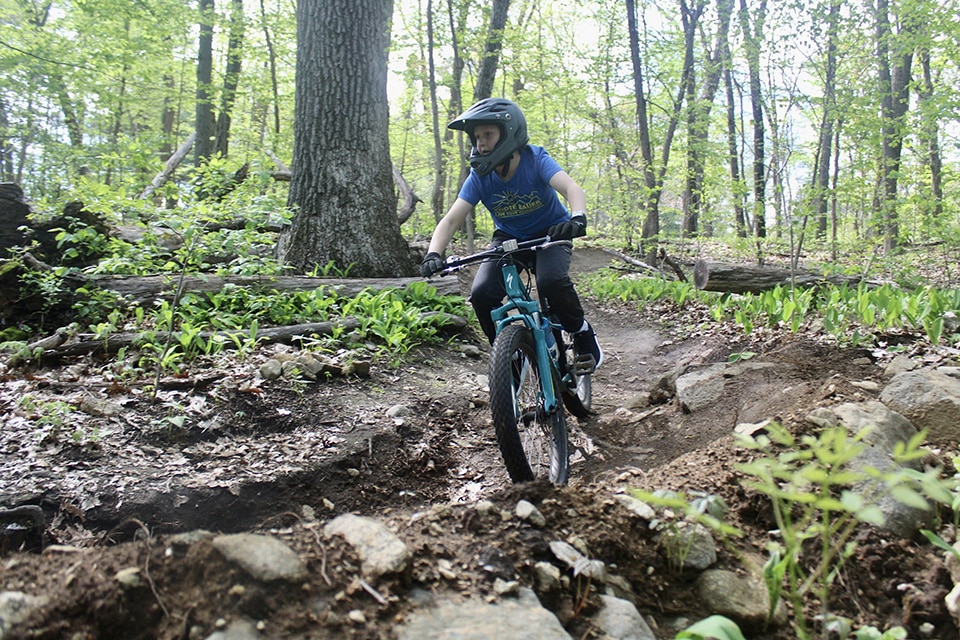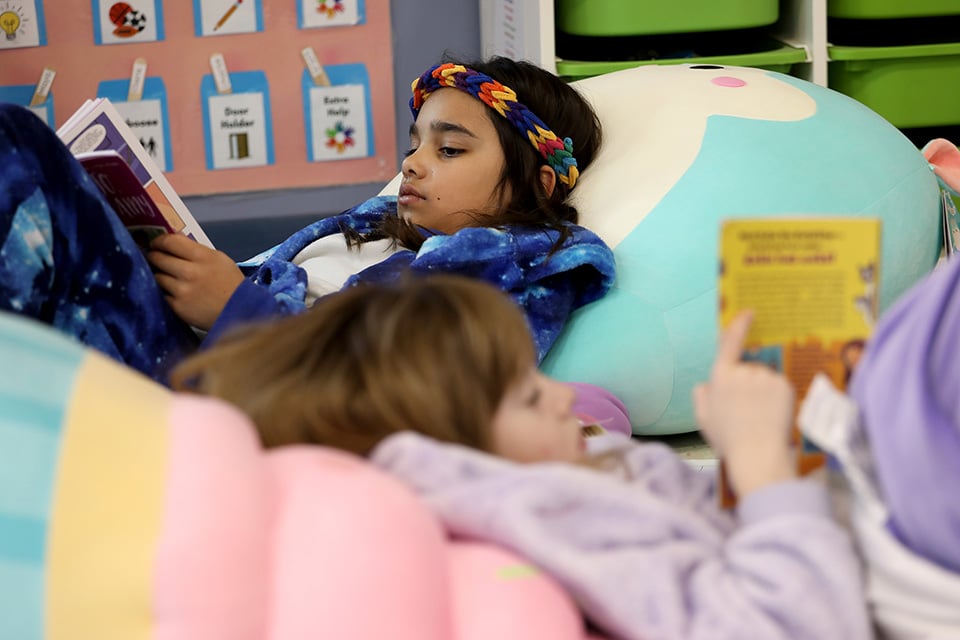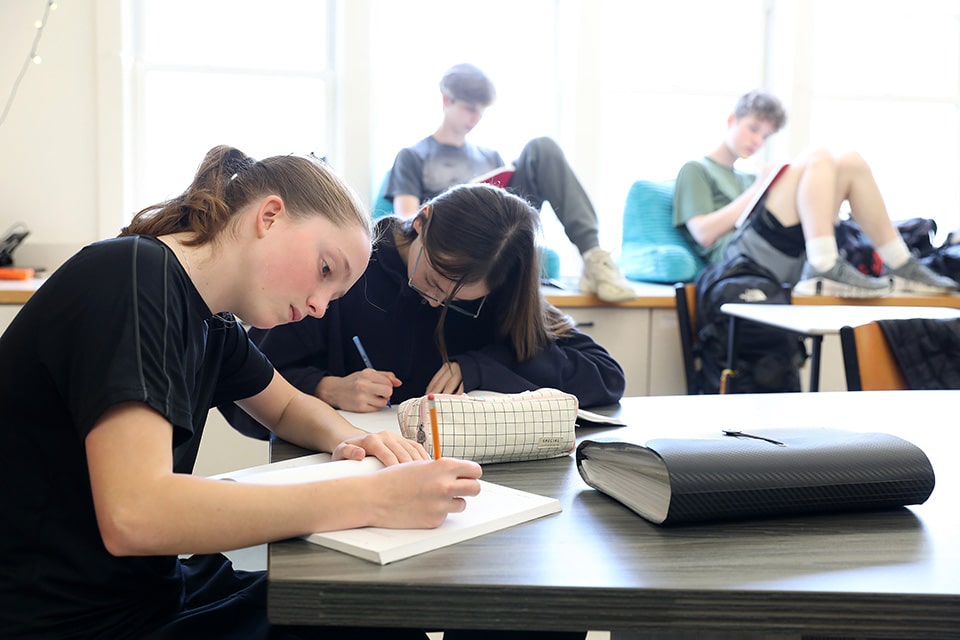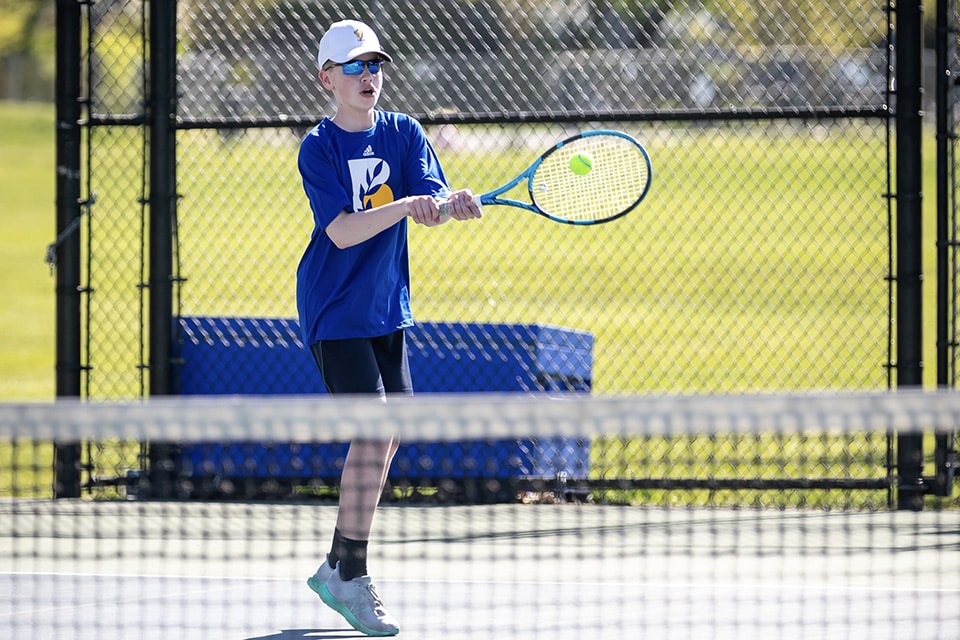Fourth Graders Describe Themselves In French
The fourth grade French intensive was “All About Me!” Students started the six-week intensive by creating a self-portrait using the media of their choice—sculpture, drawing, collage, etc. They created a group song, mastering building sentences with different sentence starters and finishers. They played “Guess Who?” in partners. They polished their inferencing and listening skills when watching videos of native speakers describing themselves or their food likes. Lastly, fourth graders learned how to ask for vocabulary in French; “Comment dit-on?” and built a class list of their favorite activities. In the process, students learned how to describe their physical and personality traits, and how to describe their preferences in foods, drinks, sports, and activities. They used three types of sentence starters: “je suis”, I am, “j’ai”, I have, “j’aime”, I like. To conclude the intensive, students created a poster with their self-portrait and information in French and presented their posters to their classmates.
– Nathalie Pellenq, French teacher
Kindergartners Build Up Their Vocabularies
Kindergarteners have been using their knowledge of the alphabet to encode and decode CVC (consonant-vowel-consonant) words. They have been exploring CVC words, such as cat or mop, in a variety of contexts: during academic centers, throughout Fundations lessons, and even during morning meeting. CVC words are all around us! A beloved game for the kindergarteners involves reading a CVC word that is written down, then drawing a picture to represent the word. Take a look at their drawings to see if you can figure out the CVC word the kindergarteners are depicting!
– Missy Hartvigsen and Betty Pryor, kindergarten teachers
Arts Update: Second Grade Creates Bowls and Lanterns
Second grade is in the midst of an art intensive with Mr. Smith. With the woodworking studio unavailable this school year, hands-on lessons take place at student’s desks and where they learn design and building skills and gain familiarity with materials. Currently, the class is using popsicle sticks and shapes—triangles, squares, and hexagons—to create bowls and lanterns. Students started with a form outline on paper to guide the beginning of the build and then tapered and even twisted the forms to a closing point.
– William Smith, woodworking teacher
Video Highlights: This Week in Physical Education
The snowy days are a perfect way to get our students out and active. Every class enjoyed time on the sledding hill—getting in many hill sprints, building jumps, paving trails, and having fun. The action inside the gyms was just as dynamic. Click here to check out the short video recap of our students in action!
– Abbey Nyland, physical education teacher
Sixth Grade Math Bakes Up a Delicious Lesson
This week in sixth grade math, students focused on two key mathematical skills: learning how to use estimation to gauge the accuracy of an answer and understanding when to use fractional division and multiplication.
To practice these skills, students were asked to help me figure out how to complete the dinner I was making. For example, if the recipe calls for two tablespoons of lime juice, but the only clean scoop available is 1/3 of a tablespoon (a teaspoon), how many 1/3 scoops do I need to use? This problem can be set up using fractional division to ask how many groups of 1/3 are in two wholes: (2/1) ÷ (1/3) = ?
Later, students were asked to help with a bread recipe. If a baker has five cups of flour and has used 3/4 of it, how much flour has been used? Here we can use fractional multiplication to show 3/4 of 5 cups: (3/4) * (5/1) = ?
Hungry for the answer? Ask a sixth grader!
– Matthew Segil, grade 6 math teacher
Eighth Graders in Latin Study Anatomy
Students in eighth grade Latin have recently started a unit focused on ancient medicine, science, and even some magic. As part of the introduction to the unit, students were presented with a list of Latin anatomical terms and tasked with creating and labeling a body and including an English derivative for each of the parts of their image. Students’ creativity, artistic talents, and flair for the dramatic were on display as they enjoyed both the artistic and linguistic activity of the class. Their cerebral muscles were working hard as they discovered the etymological connection between words like venter (stomach) and ventriloquist, pes (foot) and pedestrian, and cor (heart) and cordial. These words and other topics such as medical tools, math, and science will continue to shape our study of this chapter as we learn about ancient methods of healing and science.
– Nicole Buck, Latin teacher






